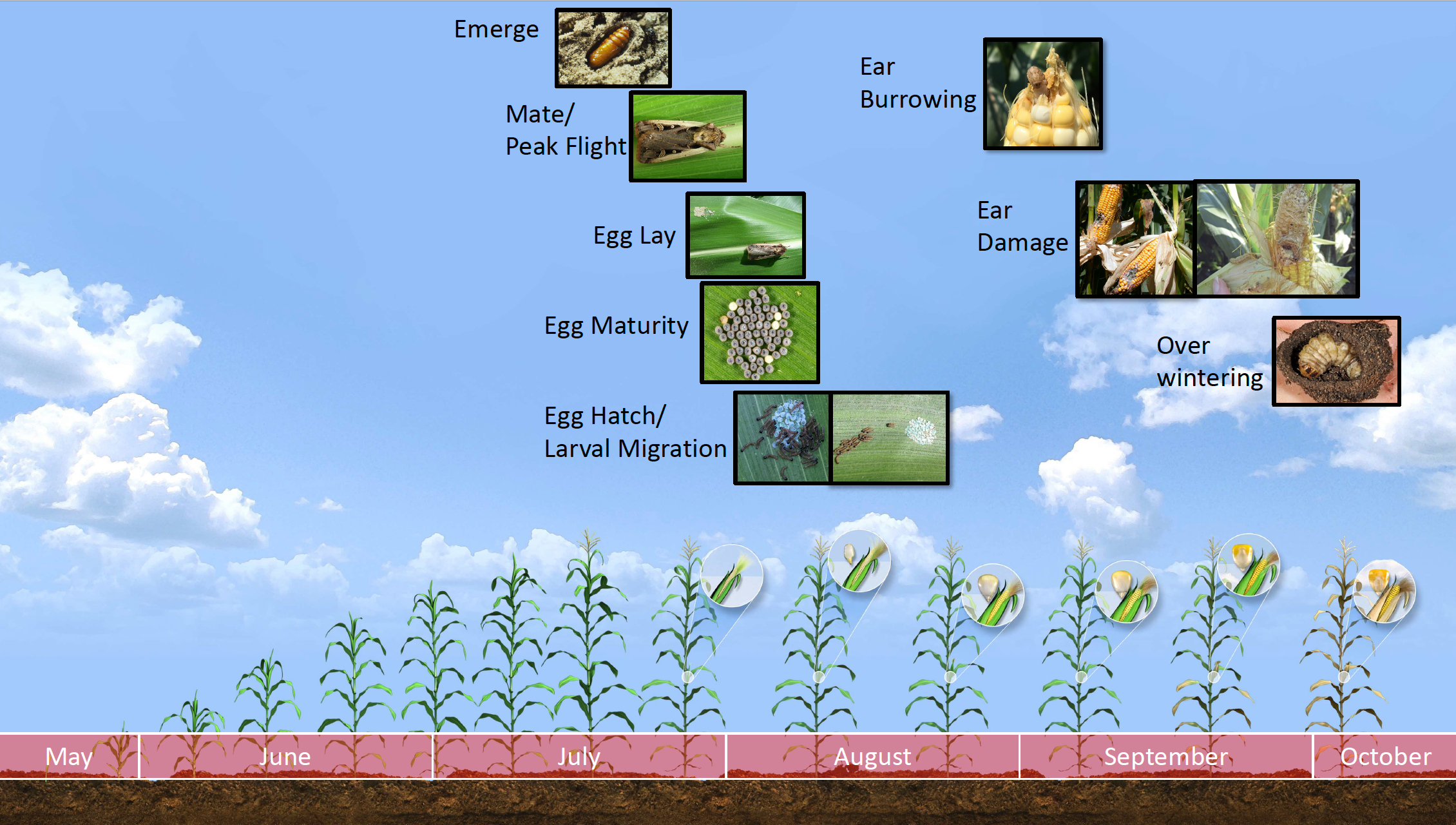Since its arrival in Ontario in 2008, Western bean cutworm (WBC) has become the single most important insect pest in field corn. The movement of this pest is pushing eastward each year, making it a concern for most field corn acres in Canada. The first step to tackling this emerging threat is to understand its lifecycle and the potential damage it can cause.
General life cycle: Female moths lay their eggs on corn leaves when the corn is silking. The eggs hatch and the larvae begin to travel up the stalk to the tassel before climbing back down to feed on the silks and tunnel into the ears. The mature larvae then emerge from the ears in the fall and drop to the soil where they burrow in and attempt to overwinter. Only a portion of the larvae survive the winter and emerge in the spring as adult moths. Survival is highest in sandy soils in the more southern parts of Eastern Canada. Because WBC moths can travel great distance in air currents and storms, many of WBC moths found in Canadian corn fields are thought to travel in from more southern areas in the USA.

Movement: WBC (Striacosta albicosta) is native to North America. In the last decade, this pest has started to expand its range Eastward. It was first detected in Ontario in 2008. Since then, WBC moths have been caught further and further East. WBC is now documented as far East as Nova Scotia and New Brunswick. Regions new to the presence of WBC tend to experience sporadic infestations that rarely reach threshold levels for insecticide applications. However, with this pest becoming more frequent in these regions, careful scouting is needed to determine if control measures are required.
Damage and control measures: WBC feeds on the silks and ear kernels and the yield loss from this feeding is estimated to be upwards of 15 bu/ac. However, of primary concern in Eastern Canada is the increased risk of mycotoxin development. The physical damage to ears caused by WBC feeding allows for mycotoxin penetration and increased DON levels (reduced corn quality). Because of this secondary concern, the thresholds for insecticide applications are lower in Canada than in the USA. Growers are advised to spray when an accumulated 5% of plants have WBC egg masses. However, in areas with a history of high DON levels the threshold for WBC insecticide applications should be lowered to 1-2%.

Be prepared
Be prepared for Western bean cutworm with Coragen® MaX insecticide.
For more details please review the documents below.
Resources
Real time Monitoring information:
Great Lakes and Maritimes Pest Monitoring Network
References
Baute T., Smith, J., and Schaafsma, A. 2018. Western Bean Cutworm: Scouting and Management in Field Corn. Field Crop News.
Peterson, J., Wright R., Ohnesorg W., Bradshaw J., Swoboda Bhattarai. 2018. Scouting and Treating Western Bean Cutworm. Cropwatch. Institute of Agriculture and Natural Resources, University of Nebraska – Lincoln.